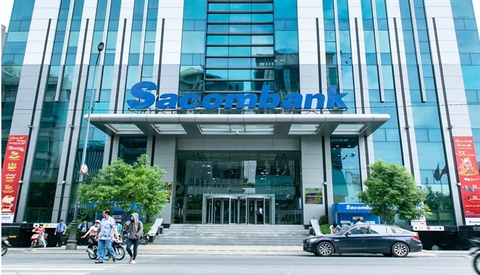Credit Growth Implication
Credit Growth Implication
In the first nine months of 2019, credit growth rose at a pace much lower than it was the same period of previous years, even lower than the growth rate of deposits and total means of payment. How come credit growth was that sluggish while businesses keep complaining about capital shortage?

Credit growth in the first nine months of this year expanded by only 8.4%, reported the General Statistics Office (GSO) recently. This figure is quite modest when compared to the 14% target for the whole year, and also lower than the rate of 9.52% recorded in the year-earlier period. Moreover, this is the lowest rate of nine-month credit growth since 2014, as the same rate in 2015-2017 was 10-11%. Notably, credit growth also unexpectedly dropped below the growth rate in capital mobilization and total means of payment, which are put at 8.68% and 8.44% respectively.
The above figures come as a big surprise, given the fact that many banks in late June had their credit growth limit for this year extended because they had reached the Basel II capital standards earlier than the deadline. VPBank, Techcombank, ACB and MBBank all were allowed to revise up their targets for 2019 by 4%. These banks should have stepped up their lending ever since, but credit growth of the entire banking industry revealed just the opposite.
Tightened lending
Even so, a closer look at the recent developments may indicate in one way or another the reason why lending activities tended to slow down in the third quarter. First, the increasingly bustling corporate bond market targeting individual customers has helped enterprises reduce their dependence on bank loans, especially when many banks and securities companies are currently actively issuing corporate bonds to their customers.
Concerning the volume of corporate bonds held by banks, the State Bank of Vietnam (SBV) in the middle of August sent a dispatch to domestic banks asking them to control the risks in corporate bond investment. In addition, commercial banks are required not to buy the corporate bonds that are aimed at restructuring the debts of the issuers in accordance with the regulations.
In fact, a look at the investment profile of some banks shows that the corporate bonds currently in their hands are mainly issued by their debtors. With the corporate bond balance incorporated into the credit balance as prescribed, once this activity is tightened and strictly controlled, credit growth rates at many banks are prone to be affected.
Then, in the early days of September, the SBV issued a warning letter to those banks that gave out loans with savings books as collateral in a way that goes against the regulations, for example, banks failing to check the plan of using the loans or making cash disbursements. Credit institutions are requested to impose strict control on the loans they grant, especially when it comes to the purpose of borrowing and the disbursements for loans secured by savings books. Any offense will be severely dealt with. Therefore, it is likely that many banks not only have tightened the grant of loans with savings books as collateral, but also have reviewed and closed loans in this category that are not in compliance with regulations and affect their credit balance.
Regarding foreign currency lending, the medium- and long-term foreign currency loans for payment to overseas suppliers of goods and services that cater to domestic demand, even if the borrower has enough foreign currency from their revenue earned by production and business, must be settled by September 30, 2019 as prescribed. For this reason, many borrowers actively wrote off their outstanding foreign currency loans ahead of schedule, which also affects the total outstanding loans at banks.
Capital restrictions
Another reason is that capital of banks seems to be limited recently, as it is now less than three months left until a number of banks have to put into practice the capital adequacy ratio according to the new standards (from the beginning of 2020). In fact, some banks were already allowed to do so in late 2018 and the first six months of this year. In other words, to boost lending, banks must measure and reconsider how their capital resources are, if they are sufficient to meet the new capital standards.
Meanwhile, banks have been accelerating the issuance of bonds and certificates of deposits with high interest rates, while sharply putting up their deposit rates, a move that suggests the pressure on capital is not minor. It is noteworthy that this is also the reason why the increase in deposits was higher than credit growth in the third quarter, contrary to the trend in the first six months of this year.
The fact that the SBV is looking to further lower the ratio of short-term capital used as medium- and long-term loans, and supplement the provisions on accounts receivable for individuals who use them for their daily needs, with any principal worth VND3 billion or more having a risk coefficient jumping from 50% to 150%, also has an impact on lending activities at banks. Although it is not yet official that the new rules will be effective from the beginning of next year, quite a few banks feel obliged to roll up their sleeves right now for timely response, thus they are unable to promote credit growth for fears of falling short of capital.
Moreover, the third quarter is often not the peak time for credit, with the seventh lunar month, during which people refrain themselves from borrowing, production, business, shopping and house repairing, falling into this period. Considering the above-mentioned seasonal factors, it was difficult for credit to grow strongly during this time.
A positive point is that while credit growth was modest, GDP in the first nine months of 2019 hit the highest level in the past nine years, which shows that economic growth is increasingly less dependent on bank credit. The stock market in general and the bond market in particular have made certain progress, and thus helping businesses reduce their dependence on credit.









